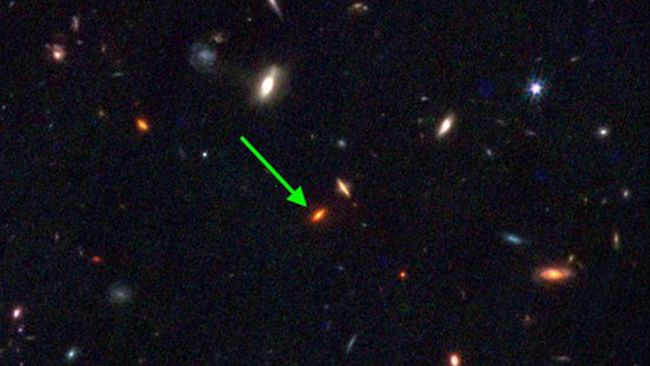The James Webb telescope has made a remarkable discovery of an ancient galaxy that surpasses the size of our own Milky Way.
Astronomers hold the belief that the initial galaxies emerged within immense halos of dark matter. However, a recently unearthed galaxy, dating back approximately 13 billion years, curiously manifested itself well in advance of the expected timeline for such a phenomenon.

The James Webb Space Telescope (JWST) has made a groundbreaking discovery in the early universe by identifying a galaxy, ZF-UDS-7329, that defies the laws of physics due to its immense size. This discovery challenges the conventional model of cosmology, as the galaxy contains more stars than our Milky Way, despite forming a mere 800 million years after the universe’s inception 13.8 billion years ago. The fact that these stars were created without the presence of dark matter contradicts the standard theory of galaxy formation. The implications of this finding are profound, as it not only questions our current understanding of the universe’s origins but also raises doubts about the validity of the standard model of cosmology. The study detailing these findings was published on Feb. 14 in the prestigious journal Nature.
According to Claudia Lagos, an associate professor of astronomy at the International Centre for Radio Astronomy Research, the existence of these immensely massive galaxies in the early universe presents significant challenges to our standard model of cosmology. This is because the formation of massive dark matter structures, which are believed to be crucial for holding early galaxies together, would not have had enough time to occur during this early period.
The ability to observe light from increasingly distant regions of the universe allows us to peer further back in time. As light travels at a constant speed through the vacuum of space, the deeper we look into the universe, the more ancient light we encounter. This is precisely how the researchers were able to utilize the JWST to identify ZF-UDS-7329, which existed approximately 11.5 billion years ago.
By analyzing the light spectra emitted by the stars within this incredibly distant galaxy, the researchers determined that these stars came into existence approximately 1.5 billion years prior to the observation, or roughly 13 billion years ago.
Although astronomers remain uncertain about the exact timeframe in which the first clusters of stars began to form galaxies as we know them today, cosmologists previously estimated that this process commenced gradually within a few hundred million years following the occurrence of the Big Bang.
Current scientific theories propose that the initial formation of galaxies involved the combination of dark matter, an enigmatic and invisible substance that constitutes approximately 25% of the known universe, with gas. These theories suggest that these early protogalaxies, after existing for 1 to 2 billion years, progressed into dwarf galaxies through a phase of adolescence, during which they consumed one another to grow into galaxies similar to our own.
However, a recent discovery has challenged this perspective. Not only did the observed galaxy crystallize without a sufficient amount of accumulated dark matter to initiate its formation, but shortly after experiencing a sudden surge in star formation, it abruptly entered a state of quiescence, ceasing its star-forming activities.
“This finding pushes the boundaries of our current comprehension regarding the formation and evolution of galaxies,” stated Themiya Nanayakkara, an astronomer at the Swinburne University of Technology in Australia and co-author of the study. “The crucial question now is how these galaxies formed so rapidly in the early stages of the universe, and what mysterious mechanisms caused their sudden cessation of star formation while the rest of the universe continued to do so.”
The researchers intend to further investigate this phenomenon by searching for additional galaxies exhibiting similar characteristics. The discovery of such galaxies could potentially contradict previously established notions regarding the formation of galaxies.
Do not forget to share your opinion with us to provide you with the best posts !



0 Comments